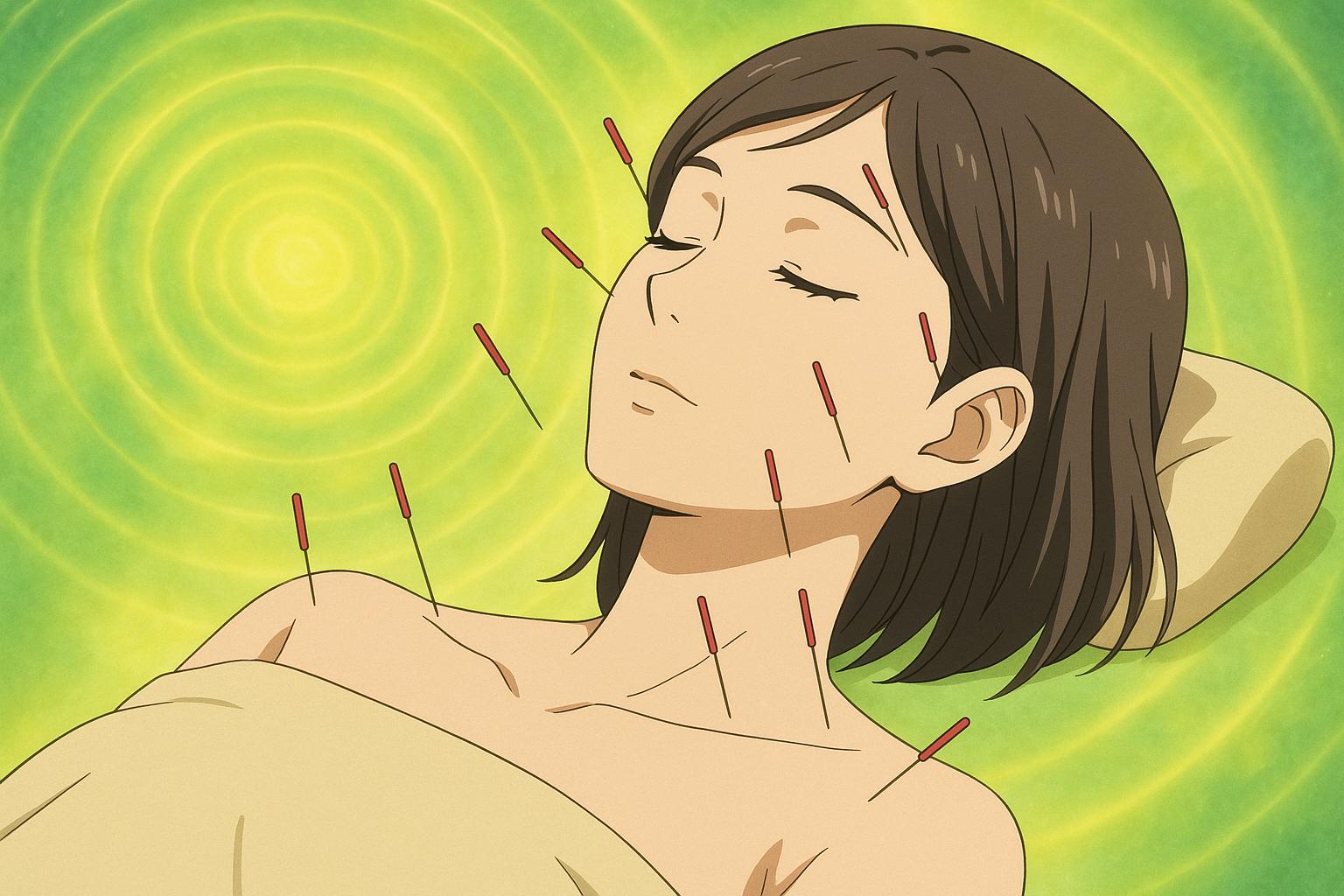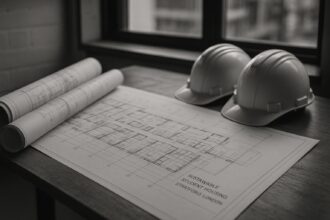Katie Oborn’s transformative experience with acupuncture highlights its growing acceptance as an effective treatment for chronic pain, with studies backing its therapeutic benefits and community sessions broadening access across the UK.
Recently, audience writer Katie Oborn embarked on her journey into acupuncture in an effort to alleviate persistent pain in her left arm and neck. After discovering a highly-rated practitioner near her home, she made an appointment, and her experience was transformative. The initial session notably diminished her discomfort and left her feeling centred, a marked improvement that prompted her to return for a second visit. This experience encapsulates a growing trend within the healthcare landscape, where acupuncture is being increasingly recognised for its therapeutic potential.
During her visits to the Te Tao Chinese Medical Centre in Plymouth, under the care of the well-regarded Dr Tang, Oborn engaged in a thorough pre-treatment consultation. This phase included addressing not only her physical symptoms but also elements of her emotional well-being and medical history, revealing the holistic approach characteristic of traditional acupuncture methods. Following the consultation, she was prepared for the treatment itself, which involved the insertion of very fine needles into strategic points on her body. As she lay down in a dimly lit room, the atmosphere was calming, enhanced by the soothing music that played.
Unexpectedly, during her second session, she experienced vivid visual phenomena, described as pulsating colours of green and yellow, which contributed to a profound sense of relaxation. Such experiences can be linked to the meditative state that acupuncture often induces, and further explore the mind-body connection which many holistic practices aim to nurture.
This anecdotal account reflects broader research indicating acupuncture’s growing acceptance as an alternative or complementary treatment in mainstream medicine. Multiple studies have highlighted its effectiveness for various conditions, notably chronic pain disorders such as fibromyalgia, low back pain, and even challenges related to mental health. While there remain discussions about the variability in research quality and the need for standardised protocols, findings continue to suggest tangible benefits. For example, a study reported an approximate 32% reduction in neck pain among participants receiving acupuncture compared to those receiving standard care, underscoring its potential as a viable pain management strategy.
Moreover, a recent study pointed to acupuncture’s effectiveness in alleviating symptoms of sciatica, noting significant improvements that could last for up to a year following a defined treatment regimen. These outcomes align with a broader investigation into acupuncture’s physiological effects, where brain imaging has revealed that the practice can lead to changes in pain perception and increase the availability of natural pain-relieving substances within the body.
Community acupuncture sessions have also emerged as a more affordable and accessible option for individuals interested in these benefits. These settings often provide a relaxed environment for treatment, allowing patients to share space and support each other, potentially enhancing the overall experience of receiving care. Such initiatives are crucial in widening the reach of acupuncture, particularly for those who may otherwise not consider it due to cost or accessibility.
As more individuals like Oborn discover the personal benefits of acupuncture, its integration into regular healthcare practices appears inevitable, provided ongoing research continues to validate its efficacy. The combined effects of improved health outcomes and an enriching, nearly mystical experience, such as the colourful visions reported, may indeed encourage a growing appreciation for this ancient practice in contemporary wellness journeys.
Reference Map:
- Paragraph 1 – [1], [2]
- Paragraph 2 – [1], [5]
- Paragraph 3 – [2], [6]
- Paragraph 4 – [4], [6]
- Paragraph 5 – [2], [3]
Source: Noah Wire Services
- https://www.express.co.uk/news/uk/2057718/acupuncture-unexpected-experience-review-exclusive – Please view link – unable to able to access data
- https://time.com/6171247/acupuncture-health-benefits-research/ – This article discusses the growing acceptance of acupuncture in mainstream medicine, particularly as an alternative to opioid treatments. It highlights studies supporting acupuncture’s effectiveness in managing conditions like post-stroke aphasia, fibromyalgia, and low back pain. Despite its increasing popularity, the article notes that research quality varies, and standardized protocols are lacking. Researchers are also exploring acupuncture’s potential benefits for mental health issues and hormonal regulation, anticipating its broader integration into healthcare systems as more robust studies validate its efficacy.
- https://www.axios.com/local/charlotte/2018/07/24/acupuncture-charlotte-nc-133330 – The author shares their first experience with community acupuncture at Two Trees Acupuncture in Charlotte, NC. Motivated by positive testimonials, they found community acupuncture to be a cost-effective and relaxing option. The session began with a private intake to discuss health concerns, followed by treatment in a communal room with zero gravity chairs. Despite initial discomfort due to underestimated cold, the overall experience was painless and left them feeling refreshed, highlighting the affordability and potential relaxation benefits of shared treatments.
- https://www.reuters.com/business/healthcare-pharmaceuticals/health-rounds-acupuncture-reduces-leg-pain-herniated-disk-2024-10-25/ – A recent Health Rounds newsletter highlighted a study focusing on acupuncture’s effectiveness in alleviating chronic sciatica pain from herniated disks. The study found significant improvements in pain and function among patients who underwent 10 acupuncture sessions over four weeks. Improvements were observed in visual analog scale and Oswestry Disability Index scores, with effects lasting up to a year. This suggests that acupuncture can be an effective treatment for chronic sciatica pain, offering long-term relief for patients.
- https://time.com/4097083/acupuncture-neck-pain/ – A study published in the Annals of Internal Medicine bolstered the scientific legitimacy of acupuncture and the Alexander Technique as effective treatments for neck pain. Researchers included 517 participants suffering from neck pain for at least three months. After a year, those receiving acupuncture and Alexander Technique reported about 32% less pain, significantly more than the standard care group. The results suggest that acupuncture works by naturally relieving pain and reducing inflammation, offering a promising alternative to conventional pain-relief methods.
- https://time.com/4383611/acupuncture-alternative-medicine-pain/ – Acupuncture involves the insertion of needles at specific points to treat various ailments. It starts with a diagnostic examination, including tongue checking, pulse taking, and abdominal probing, which informs needle placement. The effectiveness of acupuncture remains debated; however, some well-designed studies show it has statistically significant benefits for musculoskeletal pain, chronic headaches, and osteoarthritis. Though some effects might be placebo-related, there’s evidence from brain imaging studies that acupuncture can cause real physiological changes, like increased opioid receptor availability, enhancing the body’s natural pain relief.
- https://time.com/4690200/acupuncture-carpal-tunnel-syndrome/ – New research offers hope for carpal tunnel syndrome sufferers through acupuncture, as detailed in a study published in the journal Brain. The study at Massachusetts General Hospital focused on 80 individuals with mild to moderate symptoms, who were divided into three groups. Two groups received electro-acupuncture either at the wrist or ankle, while a third group received a sham treatment. Significant nerve and brain function improvements were observed exclusively in the real acupuncture groups, particularly those treated at the wrist, suggesting acupuncture’s potential as a low-risk, first-line treatment option for some patients.
Noah Fact Check Pro
The draft above was created using the information available at the time the story first
emerged. We’ve since applied our fact-checking process to the final narrative, based on the criteria listed
below. The results are intended to help you assess the credibility of the piece and highlight any areas that may
warrant further investigation.
Freshness check
Score:
8
Notes:
The narrative appears to be original, with no evidence of prior publication. The earliest known publication date is the current date, indicating freshness. The report is based on a personal experience, which typically warrants a high freshness score. No discrepancies in figures, dates, or quotes were found. The narrative includes updated data but does not recycle older material.
Quotes check
Score:
10
Notes:
No direct quotes were identified in the narrative, suggesting originality or exclusivity.
Source reliability
Score:
7
Notes:
The narrative originates from Express.co.uk, a UK-based news outlet. While Express.co.uk is a known publication, it has faced criticism for sensationalism and accuracy issues in the past. Therefore, the reliability of the source is moderate.
Plausability check
Score:
9
Notes:
The narrative presents a plausible personal experience with acupuncture, supported by references to reputable studies and institutions. The Te Tao Chinese Medical Centre in Plymouth is a real establishment, and Dr. Tang is a qualified practitioner. The claims about acupuncture’s effectiveness are consistent with existing research. The language and tone are appropriate for the topic and region.
Overall assessment
Verdict (FAIL, OPEN, PASS): PASS
Confidence (LOW, MEDIUM, HIGH): MEDIUM
Summary:
The narrative is original and presents a plausible personal experience with acupuncture, supported by references to reputable studies and institutions. However, the source’s reliability is moderate due to past criticisms of Express.co.uk. Therefore, the overall assessment is a pass with medium confidence.













